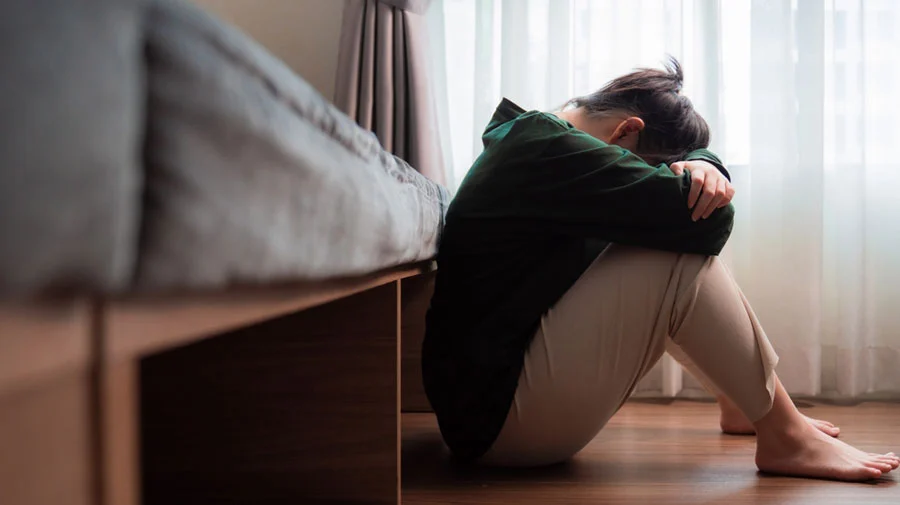A Look into the Role of PTSD and CPTSD in Negative Daydreaming
Let’s get right to the reason for your visit to our resource: maladaptive daydreaming refers to complex daydreams that disrupt daily life. Often, these daydreams are lengthy–so much so that you may lose track of time. They can impede functioning in various parts of life, impacting work, performance, education, or interpersonal relationships.
If this sounds familiar, it could be that you have tried to stop daydreaming but found that you can’t. With treatment, it is possible to reduce or stop maladaptive daydreaming. So, is maladaptive daydreaming a trauma response? If it is, what can you do?
There are multiple causes of maladaptive daydreaming. Let’s talk about trauma and other possible causes of maladaptive daydreaming first. Then, we’ll talk about treatment options at Catalina Behavioral Health and tools you can use to manage daydreams at home.
Confidential Trauma and PTSD Assessment
Is Maladaptive Daydreaming a Trauma Response?
Some people develop maladaptive daydreaming as a reaction to traumatic events. For example, childhood trauma survivors sometimes develop maladaptive daydreaming as an unconscious coping mechanism.
Even though the maladaptive daydreams one has can interfere with their daily life, it’s often the brain’s way of escaping triggers, overwhelm, and distress. In that way, maladaptive daydreaming can be a response to trauma.
Other Causes and Risk Factors
Although maladaptive dreaming can be seen in people with PTSD and C-PTSD, research suggests that it can also be linked to other disorders. For example, attention deficit hyperactivity disorder (ADHD), anxiety, depression, and obsessive-compulsive disorder (OCD).
It’s important to note that trauma isn’t the only cause of maladaptive daydreaming, but it can be one of them. Some trauma survivors have multiple mental health conditions. In fact, this is very common.
Characteristics of Maladaptive Daydreaming

Now that you know some of the most common conditions associated with maladaptive daydreaming, how can you tell for sure if it’s what you’re experiencing? There are key differences between a maladaptive daydream and normal daydreaming. For example:
- Maladaptive daydreamers may have daydreams that last for hours at a time.
- Maladaptive daydreams are intense, elaborate, or vivid.
- Maladaptive daydreams can be dissociative, leading you to feel disconnected from others or the world.
Maladaptive daydreams can be paired with repetitive body movements and unconscious facial expressions. Usually, they’re compulsive and hard to stop. If daydreams of any kind cause a problem in everyday life, it’s a sign that it’s time to seek help.
What are the Emotional and Psychological Consequences of Maladaptive Daydreams?
People who experience maladaptive daydreaming usually struggle with negative consequences outside of their control. These can include but aren’t limited to:
- Social isolation or negatively impacted relationships.
- Feelings of guilt or shame.
- Decreased productivity.
- Increased stress.
Maladaptive daydreaming symptoms are not your fault. Maladaptive daydreaming, much like complex PTSD, is not a diagnosis of its own at this time. However, it’s recognized among mental health providers.
The maladaptive daydreaming scale (a brief questionnaire) is sometimes used to detect maladaptive daydreaming. There’s no one-size-fits-all approach to treatment. Treatment for maladaptive daydreaming will depend partially on possible underlying causes.
Treatment and Therapy Options for Maladaptive Daydreaming

Mental health therapy is the main treatment for maladaptive daydreaming. Right now, treatments like cognitive behavioral therapy (CBT) are the most common therapies used for maladaptive daydreamers. CBT is often used for forms of mental illness like anxiety, depression, dissociative disorders, or trauma disorders,
A trained therapist can work with maladaptive daydreamers to identify what triggers their daydreams. For example, increased stress can lead to poor mental health and often increases the severity of mental health symptoms like excessive daydreaming.
If you have a diagnosable condition such as complex PTSD or PTSD, a comprehensive treatment approach is ideal. Many people who experience maladaptive daydreams have underlying trauma or mental health conditions, so a thorough evaluation from a qualified professional can be valuable.
Why Address Underlying Trauma in Maladaptive Daydreams?
Trauma treatment aims to help individuals develop healthier coping mechanisms, reduce overall distress, and improve functioning in their daily lives. It can help you feel more present, maintain healthy relationships, and feel confident in yourself in addition to overcoming the daydreams that interfere with your life.
Often, a maladaptive daydreamer who has been through trauma will have additional symptoms. These could be physical symptoms like headaches and gastrointestinal distress. Common emotional or psychological symptoms include but aren’t limited to flashbacks, depression, painful memories, and hypervigilance.
Part of why it’s so essential to address trauma when applicable is that it can help you heal from other aspects of trauma disorders, too. Many people, especially those with a history of childhood trauma, have experienced symptoms for a long time. Regardless of how long your symptoms have been present, treatment can help.
Our Mental Health Treatment Programs Can Help

Catalina Behavioral Health clients get comprehensive evaluations that look at factors like your history of traumatic events. During an evaluation, a provider will ask about the symptoms you experience, when they started, and what was going on in your day-to-day life at that time. In this case, they’d ask when the maladaptive daydreaming began.
Assessments or evaluations at our center are 100% confidential. Catalina Behavioral Health treats a wide variety of mental health conditions and concerns. Our programs take a whole-person approach, and the therapists you’ll work with are trauma-informed, so you can be confident in their expertise and understanding. We’ve seen many clients overcome trauma responses like maladaptive daydreaming.
Our Arizona-based treatment center offers multiple levels of care. This includes outpatient programs for those who need flexible treatment options. We also offer inpatient treatment for those who need more support, such as those with moderate-to-severe symptoms. When you contact us about treatment, we can help you decide what starting level of care is right for you.
Get Effective Trauma Treatment Options
Managing Maladaptive Daydreaming After Treatment
A qualified therapist can help you build a set of coping skills to address maladaptive daydreaming behavior and negative emotions that might arise as you work to overcome it. Whether now or after treatment, here are some critical skills maladaptive daydreamers can use to support themselves.
- Keep a daydreaming journal to identify patterns and behaviors. For example, triggers, like extra stress, that may have led up to maladaptive daydreaming and the calendar day(s) you experience maladaptive daydreaming on.
- Stress management. Feeling overwhelmed or stressed out can negatively impact anyone’s mental health. When you struggle with something like maladaptive daydreaming, reducing stress and having coping skills for stressful times matters more than ever. Grounding exercises can be a strong coping strategy for those who have experienced trauma or who experience other mental health concerns.
- Improving sleep habits. Adequate sleep supports mood, overall mental health, and focus. It can also reduce fatigue. Develop a calming bedtime routine and good sleep hygiene habits so that you can feel refreshed and better cope with triggers during the day.
- Positive self-talk. Maladaptive daydreams can cause significant distress, and it can be hard to lose time due to them. Positive self-talk (e.g., “It is not my fault. How can I support myself? Are there triggers I can identify and avoid next time?”) can make a world of difference following a daydream as you work toward symptom management.
Maladaptive daydreaming can be highly misunderstood. With the emotional distress that can emerge from maladaptive daydreams in mind, the stress they cause can make maladaptive daydreaming somewhat cyclic in nature. Finding mental health support from professionals who understand matters.
Break the Cycles of Maladaptive Daydreaming at Catalina

While it is not an officially recognized condition, maladaptive daydreaming is serious. It can be a sign of underlying mental health concerns and, in some cases, a trauma response. Seeking professional support can help you stop or manage maladaptive daydreaming symptoms and improve your overall well-being.
To get in touch and learn more about how our trauma and mental health therapy programs can help you, call Catalina Behavioral Health today. Our admissions team is here to answer your questions, walk you through the admissions process, or verify your health insurance coverage for treatment.
Up To 100% of Rehab Costs Covered By Insurance
FAQs Regarding Maladaptive Daydreaming
What is the root cause of maladaptive daydreaming?
The root cause of maladaptive daydreaming can differ from person to person. People with PTSD, C-PTSD, depression, OCD, anxiety, and other mental health conditions can be more prone to maladaptive daydreaming.
Why is maladaptive daydreaming not a disorder?
It’s true that maladaptive daydreaming is not in the Diagnostic and Statistical Manual of Mental Disorders (DSM) at this time. Some say that this is because maladaptive daydreaming is more of a symptom than a disorder than a condition of its own. However, this doesn’t mean that it can’t affect your life severely.
If you have maladaptive daydreams, you know that they can take up many of your waking hours. Regardless of diagnosis, treating maladaptive daydreaming behavior is possible. If someone has co-occurring mental disorders, it is vital that they are addressed.
Does maladaptive daydreaming go away?
Maladaptive daydreams can, but don’t always, go away on their own. If they’re linked to another condition, whether CPTSD, PTSD, ADHD, or something else, it’s integral to address the underlying cause. Treating maladaptive daydreaming and underlying causes comprehensively is ideal and can help you overcome them.
References
- https://www.health.harvard.edu/mind-and-mood/maladaptive-daydreaming-what-it-is-and-how-to-stop-it
- https://pubmed.ncbi.nlm.nih.gov/32845809/
- https://pubmed.ncbi.nlm.nih.gov/28598955/





